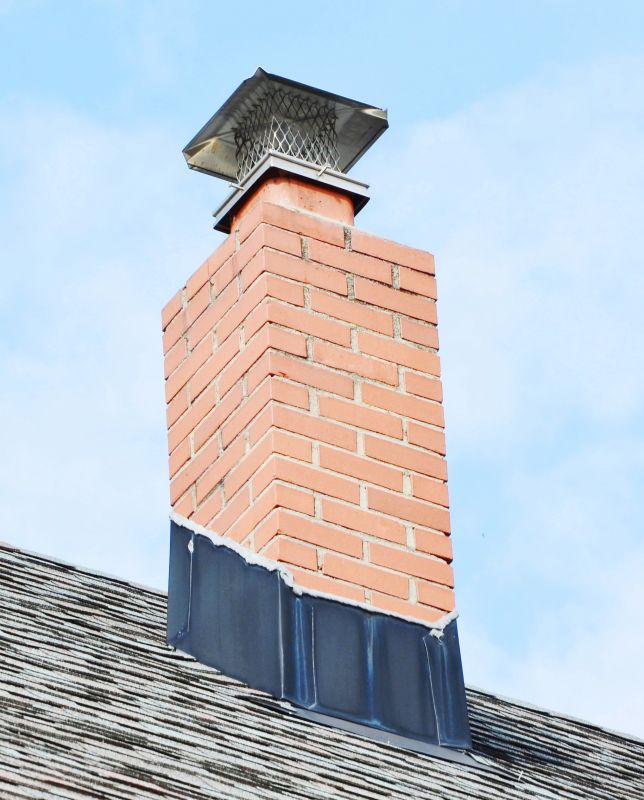Ultimate Guide To Essential Products For Chimney And Roof Flashing Fixes
Find out which products professionals trust for repairing and sealing chimney and roof flashing to prevent costly damages.
 Maintaining the integrity of chimney and roof flashing is essential for preventing water intrusion and protecting the structural components of a building. Flashing materials are designed to seal joints and transitions where the roof intersects with chimneys, vents, or walls, effectively directing water away from vulnerable areas. Over time, exposure to weather elements can cause flashing to deteriorate, crack, or become loose, necessitating repairs or replacements to maintain a watertight seal.
Maintaining the integrity of chimney and roof flashing is essential for preventing water intrusion and protecting the structural components of a building. Flashing materials are designed to seal joints and transitions where the roof intersects with chimneys, vents, or walls, effectively directing water away from vulnerable areas. Over time, exposure to weather elements can cause flashing to deteriorate, crack, or become loose, necessitating repairs or replacements to maintain a watertight seal.
Top Overall Option
Flexible Roof and Chimney Flashing Sealant
A versatile sealant designed to adhere to various roofing materials, providing a flexible and weather-resistant barrier for small to medium cracks and gaps. It is suitable for use on metal, asphalt, and other common flashing materials, offering ease of application and durability. This product is ideal for sealing around chimneys, vents, and flashing joints to help prevent water infiltration and extend the life of existing flashing components.
Types of Products For Chimney And Roof Flashing Repairs
Flexible Sealants and Caulks
Designed to fill small gaps and cracks, offering a flexible, weather-resistant seal suitable for various roofing materials.
Metal Flashing Strips
Pre-formed or custom-cut metal strips used for replacing or reinforcing existing flashing around chimneys and roof joints.
Rubberized Flashing Membranes
Self-adhesive membranes that provide waterproof barriers, ideal for patching or overlaying damaged flashing areas.
Roofing Tapes and Flashing Tape
High-strength tapes used to seal seams, overlaps, or minor cracks in flashing components for quick repairs.
Copper and Aluminum Sheets
Durable, malleable sheets suitable for custom fabrication and long-lasting flashing repairs.
Roof Coatings and Sealants
Protective coatings that add an extra layer of waterproofing and UV resistance to existing flashing.
Butyl Rubber Sheets
Flexible, adhesive sheets used to seal large gaps or damaged areas in flashing systems.
Polyurethane Sealants
Elastic sealants that bond well to various surfaces, ideal for sealing around chimney bases and flashing joints.
Bitumen-Based Flashing Materials
Heavy-duty materials suitable for high-wear areas, providing excellent waterproofing and durability.
PVC Flashing Components
Synthetic flashing parts that are lightweight and resistant to corrosion, suitable for various roofing setups.
Popular Choices
Widely used for quick fixes around chimneys and vents, offering ease of application and good adhesion.
Popular for overlay repairs and sealing large areas with minimal tools required.
Commonly selected for their ease of installation and resistance to corrosion.
Favored for their strong adhesion and flexibility in sealing leaks and cracks.
Essential tools for applying sealants precisely around flashing joints and chimney bases.
A popular choice for traditional and long-lasting flashing repairs due to their malleability.
Convenient for applying protective coatings over existing flashing to enhance waterproofing.
Lightweight and resistant, often used in modern roofing systems for quick repairs.
Often used as a durable overlay material for damaged flashing areas.
Tools that facilitate smooth, even application of sealants for professional-looking repairs.
When considering products for chimney and roof flashing repairs, it is important to evaluate the specific type of flashing involved, the material compatibility, and the extent of damage. Repair products range from flexible sealants that can fill small gaps to durable metal flashing strips that can be customized and installed for long-lasting repairs. Proper selection and installation of these products can help prevent leaks, mold growth, and structural damage.
In addition to the repair materials themselves, various accessories such as flashing tape, sealant applicators, and protective coatings can enhance the effectiveness and longevity of repairs. It is recommended to assess the condition of existing flashing thoroughly and choose products that match the original material or are compatible with the existing setup. Regular inspection and maintenance are key to ensuring your roof and chimney remain protected against water intrusion.
Whether undertaking a minor patch or a comprehensive replacement, understanding the range of available products can help homeowners and professionals make informed decisions. Properly selected repair products not only restore the functionality of flashing but also contribute to the overall durability and safety of the roofing system. Investing in quality repair solutions is a proactive step toward preserving the integrity of your home or building over time.
Key Buying Considerations
- Compatibility with existing flashing materials to ensure proper adhesion and performance.
- Weather resistance features such as UV stability, waterproofing, and flexibility in temperature extremes.
- Ease of application, including tools required and the level of skill needed for proper installation.
- Durability and lifespan expectations based on the product's composition and quality.
- Flexibility of sealants and membranes to accommodate building movement without cracking.
- Compatibility with different roofing types, including asphalt, metal, and tile.
- Coverage area and whether the product is suitable for small repairs or larger-scale projects.
- Resistance to common environmental factors such as wind, rain, snow, and UV rays.
- Ease of removal or reapplication if future repairs are necessary.
- Cost-effectiveness in relation to the repair scope and long-term performance.
- Availability of accessories like applicator tools, tapes, or patches that complement the repair products.
- Manufacturer reputation and user reviews to gauge reliability and performance.
- Local building codes or regulations that may specify acceptable materials or methods.
- Shelf life and storage conditions to ensure product effectiveness when needed.
- Environmental considerations, such as VOC content, if relevant to your project.
